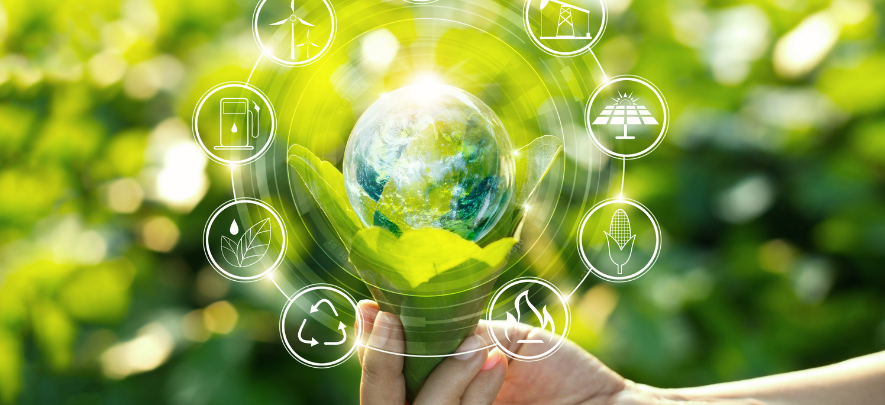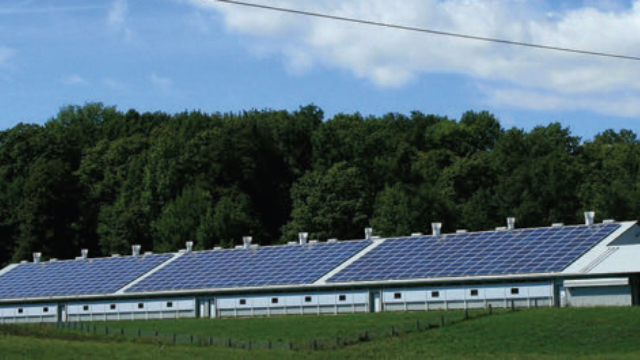
The sustainability imperative

Retail
114 week ago — 11 min read
Sustainability is no longer a buzzword. It is an imperative. Unsustainable production and consumption of natural resources and services, valued at approximately 125 trillion USD by the World Wildlife Fund (WWF) are driving the destruction of natural habitats and the loss of biodiversity. WWF’s Living Planet Index (LPI) shows a 68 per cent average decline in the global vertebrate species’ populations between 1970 and 2016.
The good news, however, is that there has been a steady movement towards sustainability in recent years. And the pandemic has presented an opportunity for us to relook at our supply chains and reflect on our growth strategies to adopt an inclusive economic, social, and environmental sustainability model for future-proofing of businesses.
“There are two key aspects that one must look at. The first one is to ensure whatever is being manufactured, is being done under safe and healthy conditions where the employees are treated well. The second aspect one should focus on is manufacturing products which create as little impact on the environment as possible,” Swaminathan R, Chief Supply Chain Officer, ABFRL said.
Customers driving change
“Going forward, customers will ask for more sustainable products and the direction of change is going to be driven by customers,” added Swaminathan R. Not only does it matter to the consumers that the products do not harm the environment when being consumed or after being discarded, but it also matters to them how the products are made.
Millennials and Gen-Z buyers in particular are open to paying a premium for more sustainable products. They are even willing to migrate to brands that offer ethically sourced products.
There is a growing awareness around where and how companies source their materials and sustainability has become a key criterion influencing purchase decisions today. Millennials and Gen-Z buyers in particular are open to paying a premium for more sustainable products. They are even willing to migrate to brands that offer ethically sourced products.
This has made retailers and manufacturers more conscious about sustainability than ever before. Businesses are now working with their suppliers to implement responsible sourcing, which offers advantages like improved efficiency, better costing, improved vendor relations, reduced product call-backs, and better customer perception.
The role of retail
Retailers are a critical interface between manufacturers and consumers and therefore, play a key role in influencing the sustainability of supply chains and awareness levels around their customer bases. Leading global retailers understand the critical link between their core business supply chain and the environment and have been making responsible sourcing commitments. India’s 450 billion USD retail industry has taken a cue from global retailers to ensure that supply chains are free of environmental and social concerns and that raw materials are sourced free from deforestation and child labour.
Talking about the role of retailers in this green revolution GR Srikkanth, SVP, Spencer’s Retail said, “We act as an intermediary between the producers and consumers. We are in the position that can have the most promising influence on the society in safeguarding the natural resources by creating a more sustainable form of development.”
Srikkanth also explained how a retailer must up-skill and educate the entire ecosystem and create awareness about sustainable supply chain practices. He also highlighted how it is the retailers’ responsibility to periodically circulate information about best practices, changes in the law, or the introduction of newer technologies to practice responsible retail.
Tech-based solutions
Technology has a huge role to play in this ongoing shift towards sustainable business practices. The adoption of responsible production and consumption practices through harnessing technology will help in building resilient transparent and traceable supply chains. Traceability and transparency in mapping tools can help us in managing supply chain transparencies and disclosures. Technologies like block-chain, RFIDs, supply chain management systems have enabled countless organisations to make their supply chains greener.
Data analytics tools also help accurately measure the progress organizations make and the returns they generate due to their sustainability initiatives. Swaminathan R considers measurement as one of the key components in their journey towards continually pushing towards becoming a more sustainable organization. The real challenge with measurement is collecting accurate and reliable data; the solution for which can only be birthed by technology.
The investment-angle
Speaking about the investments required for going sustainable, Umasankar Mahapatra, Sr. Vice President – Innovation & Sustainability; Business Head – Health & Hygiene, Welspun India said, “If it is a technology-based solution that you want to set up, then the initial investment may be high. You also need to spend on setting up the entire ecosystem— hardware, software, learning and development of your team. The investment is a mix of both—soft skill and infrastructure.” But there is a silver lining; To quote Philippa Walker, Programme Manager-Asia Sustainable Palm Oil, WWF-Singapore, “To develop this technology is expensive but once it’s there, it doesn’t go away. And as we see it advance and develop, that’s when we know sustainability can be scaled.”
A common myth surrounding sustainability is that it is something that is too capital intensive and only large organizations can run such a project. Small retailers can avail relatively cheaper tools like management systems, shipping tools, supply chain tools and can subscribe to pre-existing software instead of getting a customised software management system.
Also, not everybody needs to invest in very tech-heavy solutions either. Even with better systems and procedures, an organisation can make its supply chain more sustainable.

Renewable Energy is one of the most important areas of focus for fashion retailers
The green way forward
“It is a very opportune time where there is an increased need to place robust systems to ensure responsible businesses as a norm rather than an exception. Now this also become even more pertinent as different supply node mapping and responsible business principles are needed to be applied uniformly across the value chains,” stated the hopeful Dr Manish Pande, Director & Head, Project Analysis & Documentation (PAD) Division, Quality Council of India when asked about the future of sustainability in retail supply chains. India is one of the largest importers and consumers of agricultural commodities and holds a pivotal position in the global soft commodity trade. There’s huge potential to influence a transition towards sustainable supply chains out from India especially with the exponential growth seen in technology during the pandemic coupled with customer sentiments being conducive to sustainability. The green wave has just begun.
Sustainable priorities
Renewable Energy is our biggest focus right now. Next is circularity. Most of our stores are not under our control, either they are leased or franchised. So, implementing something in a company-owned store versus that of a franchise is different. Waste management at a company-owned store, a franchised store, an MBO and an LFS is a completely different story. We are also trying to get more and more sustainable raw material that has a good end of life cycle. In addition, we want to ensure that artisans are employed and empowered. - Rohan Batra, Head - CSR and Sustainability, House of Anita Dongre
Our priority is to move from product lifecycle management to lifecycle thinking management. This involves thinking about how to build the whole cycle of sustainability right from sourcing, design, production, vendor selection, transportation, distribution, forward and reverse logistics and finally consumer. Unless you engage the consumer, you will not be able to demonstrate sustainability.
Furthermore, we endeavour to bring sustainability to not just the supply chain or company but the entire value chain. For that, we need to bring in all stakeholders, suppliers, partners, retailers, employees, consumers everyone including regulatory needs to be on that value chain.
We believe the linear model of making garments is not sustainable. And lastly, we are working on changing the mindset of people from the make, sell and dispose model to make, sell and remake model-- linear to circular, which requires a lot of collaboration. - Naresh Tyagi, Chief Sustainability Officer, ABFRL
Our three key priorities are sustainable packaging, renewable energy and reuse, recycle and re-harvesting water. - Ajit Pattnaik, Head – Sustainability (ESG) – Lifestyle Business, Raymond Ltd.
Our 3 key priorities are: First, securing sustainable raw material since 80-90% of our raw material is cotton. The second is traceability. Welspun has a patented traceability solution called Weltrack, which we want to extend beyond premium fibres. For that, we are moving to a blockchain-based platform. The third is embracing and expanding circularity, organisation-wide. - Umasankar Mahapatra, Sr. Vice President – Innovation & Sustainability; Business Head – Health & Hygiene, Welspun India Ltd.
Our number one priority is traceability. Everything boils down to data and the impact we create. We want to go beyond tier 1 and tier 2 and get transparency right to the grassroots. Number two focus is creating more sustainable garments and increasing the sustainability quotient of existing garments. Another area of focus is reducing and eliminating waste wherever possible and creating a base for circular waste management. - Tushar Jindal, Head – Sustainability, Responsible Supply Chain & CSR, Arvind Fashions Ltd.
Also read: Tranform or be transformed
Article & image source: STOrai Magazine. Based on panel discussions at ReTechCon 2021 and RAI webinars.
Disclaimer: The views and opinions expressed in this article are those of the author and do not necessarily reflect the views, official policy or position of GlobalLinker.
Most read this week
















Comments
Please login or Register to join the discussion